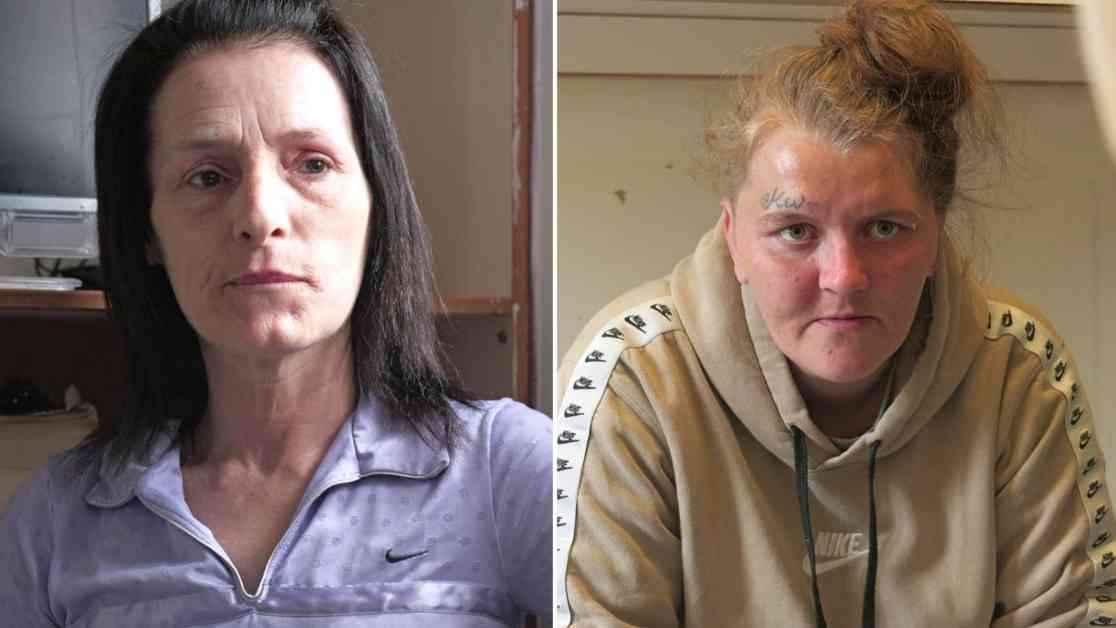Walking around the grounds at HMP Foston Hall, a prisoner shouted, “Good luck, because it’s a shithole here.” Some inmates described this women’s prison in Derbyshire as a “holiday camp” or even “rehab.” The views on the prison varied, much like the types of prisoners it housed – from murderers to shoplifters.
We visited the prison to speak with individuals ahead of the upcoming sentencing review. The review is expected to recommend the elimination of short sentences for certain lower-level crimes and question the effectiveness of prisons in punishing certain “vulnerable” groups of offenders, including women.
Inmate Connie Parsons shared her experience with us from her cell. She admitted to shoplifting nine times and being in and out of prison since she was 15 years old. “I normally only get four weeks, three weeks, two weeks. It’s a constant cycle of going out, committing crime,” she explained.
Parsons revealed that she had been homeless and struggled with drug addiction in the past. She expressed feeling unsafe in the prison and shared that she had started self-harming since her time there. Despite having a teenage son on the outside, she admitted that she had trouble connecting with what she missed about him.
When we presented Parsons’ case to the prisons minister, Lord Timpson, he expressed sadness at her situation. He acknowledged that for many women, prison is the right place to be, but for certain circumstances, alternative paths should be explored to prevent further criminal behavior.
Tilat Ajmal, who had served less than three months for smuggling an item into the prison, shared her struggles with re-entering society after her release. She viewed having a conviction as a hindrance to finding employment, despite working for the NHS for 18 years prior to her incarceration.
At a women’s center in Nottingham, we attended a support session where it was emphasized that women offenders face unique challenges in the criminal justice system. The absence of a support network upon their imprisonment can lead to devastating consequences, such as losing homes or having children taken into care.
Donna Pritchards, a repeat offender at HMP Foston Hall, described prison as a form of rehab for her. She highlighted the opportunity to get clean while incarcerated, noting the prevalence of drug issues within the prison.
Regarding the availability of drugs in jail, Amanda Brewer, the drug strategy lead, emphasized the significant impact of illicit substances on prisoners’ well-being. The trading of prescription drugs among inmates was also noted as a concern.
Throughout our exploration of the criminal justice system, it became evident that many feel prison is not an effective solution for female offenders. The government’s consideration of alternatives to custody reflects a recognition of the need for more tailored approaches to address the complex needs of women in the system.
As discussions around the sentencing review continue, the focus on reducing short prison sentences for women underscores the recognition of their vulnerability and the potential for negative repercussions from incarceration. Finding the right balance between punishment and rehabilitation remains a challenge that requires careful consideration and implementation.
In conclusion, the current state of the prison system for women offenders raises questions about the efficacy of incarceration as a form of punishment. The push for alternatives to custody signals a shift towards a more holistic and individualized approach to addressing the needs of female offenders. The road ahead may be complex, but the recognition of the shortcomings of the current system is a crucial first step towards meaningful reform.













